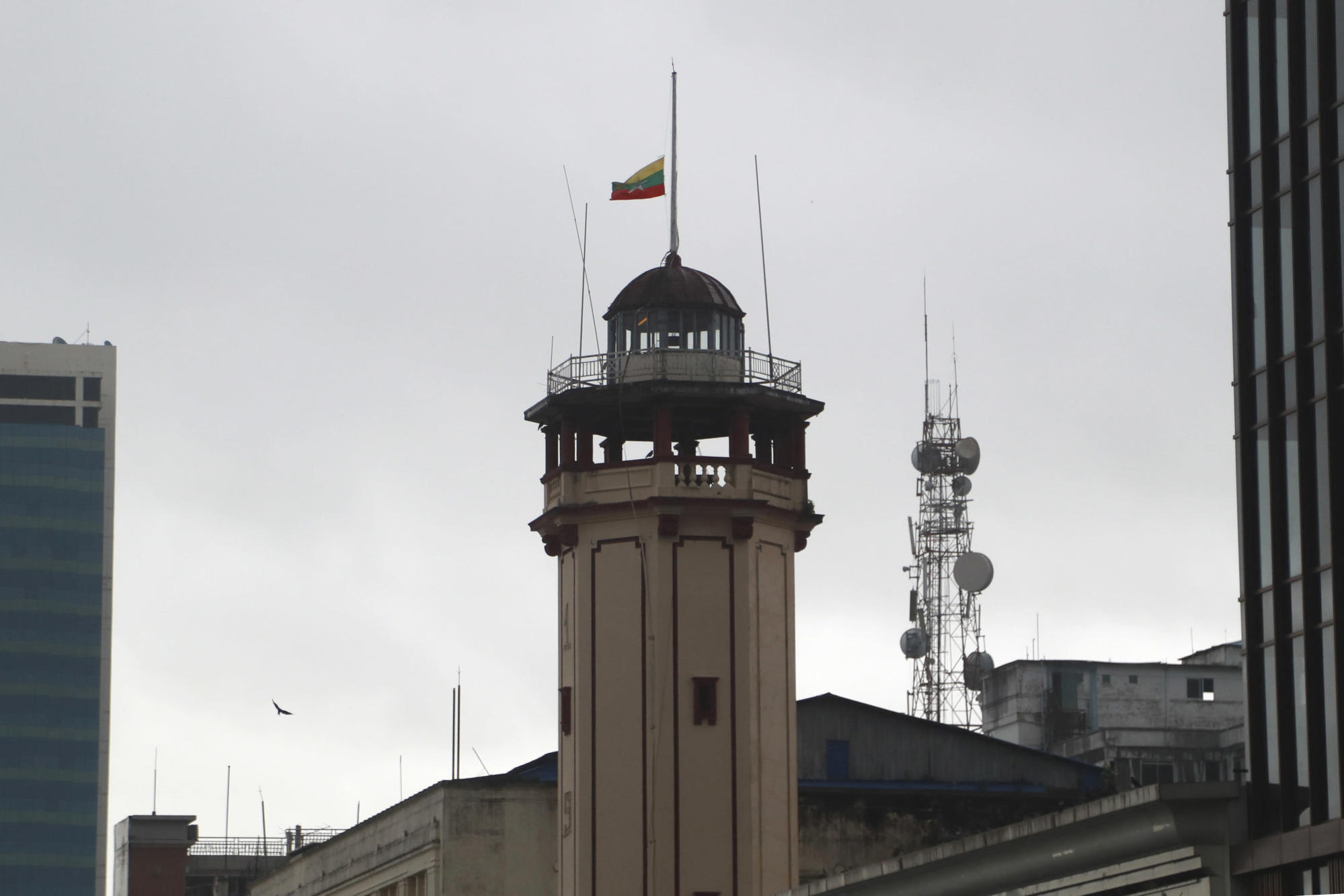BANGKOK (AP) — Myanmar’s military-installed government and those seeking to topple it on Monday marked the 74th anniversary of the assassination of independence hero Gen. Aung San, the father of the country’s recently ousted leader, Aung San Suu Kyi.
The separate commemorations by the contending groups were a reminder of the tragic political turmoil that has marked much of the country’s history, including dysfunctional parliamentary rule, armed struggle by ethnic separatists and military repression. It also highlights the complicated relationship of Suu Kyi and the military to her father, whose legacy they both claim.
There were protest marches Monday in several cities across the country commemorating Aung San, six Cabinet colleagues and two other officials who were killed at a Cabinet meeting less than six months before Britain formally handed independence to Myanmar, then called Burma. Aung San was 32 years old when he died. A political rival, former Prime Minister U Saw, was tried and hanged for plotting the attack.
The protests, generally brief to avoid confrontations with security forces, also paid tribute to those who have lost their lives protesting the February military takeover that ousted Suu Kyi and her elected government. According to the Assistance Association for Political Prisoners, at least 919 protesters and bystanders have been killed by the security forces, though the government calls that figure an exaggeration.
In Yangon, some neighborhoods heard a cacophony of car horns at 10:37 a.m., the time of the 1947 attack. About a decade ago, pro-democracy activists revived a tradition in which factories sound their sirens and public activities stop for a minute in memory of the nine martyrs.
An official memorial ceremony was held, as every year, at Martyrs’ Mausoleum in Yangon, near the foot of the famous Shwedagon Pagoda. The service this year was low key, attended by neither Suu Kyi, who is under arrest, nor Senior Gen. Min Aung Hlaing, who took over as the country’s leader.
Religious Affairs Minister Ko Ko was the highest-ranking official in attendance. Toe Aung, a Yangon city official, laid a wreath on behalf of Suu Kyi’s family.
Suu Kyi, 76, has not been seen in public since the takeover apart from one photo shown on state television in May taken inside a court at the start of criminal proceedings against her. The legal actions are seen as a calculated move by the military to permanently remove her from politics.
The state-run Global New Light of Myanmar newspaper had a rare front-page graphic with an illustration of the memorial, a photo of Aung San and a quote from him.
Inside, an editorial said Aung San’s speeches remain relevant today and suggested his words justified the military’s steering of the country.
“The summary of his speeches means: All the people should be disciplined and united, and the motherland Myanmar must be prosperous,” the editorial concluded. “So, let’s march along a straight path to the goal without derailment.”
The military used to bask in the reflected glory of Aung San, who led the independence army as well as negotiated freedom from the British.
But after Suu Kyi rose to prominence in a 1988 pro-democracy uprising that was crushed by the military, she was more closely identified with her father’s legacy. She has been seen as sharing her father’s charisma, fierce nationalism and stubborn streak.
Suu Kyi became the main nemesis of military rule, winning the 1991 Nobel Peace Prize for her nonviolent struggle for democracy but also spending 15 years in house arrest for her activities.
In the 1990s, the military government then in power began to chip away at Aung San’s image.
State-run newspapers abandoned their practice of printing commemorative biographical sketches of Aung San along with other slain leaders, together with excerpts of the independence hero’s speeches. Lower-ranking officials attended the Martyrs’ Day ceremonies and Aung San’s image was replaced on currency.


